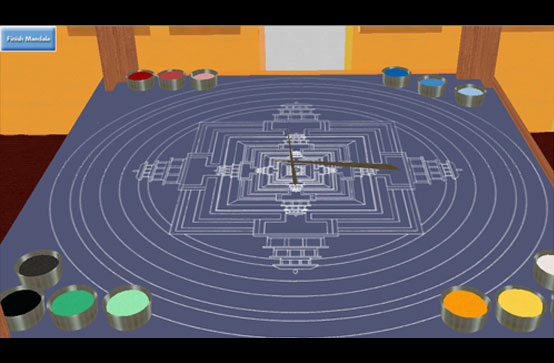|
 |
|
Conducting Rituals in Virtual Spaces
Design Document Excerpt
While certainly representations of religious figures, events, and ideas have played a significant role in religious ritual throughout history, one can deduce the complexity of integrating religious practice within the fused dichotomy of representation and experience of virtual environments. Within virtual reality is the representation of artifacts, but these virtual objects seem to have a sense of place, taking up virtual space. Once a person is interacting within this virtual space, he/she has “…the opportunity to conduct almost any ritual, regardless of time, place, or one’s hierarchical status (e.g., not being officially consecrated as clergy).” [Koltko-Rivera] When in a virtual reality environment, a person may also try out different religious practices, without potential uncomfortable social consequences, or choose various rituals as a method of creating his/her personal traditions. In the beginning of virtual reality interactions, it may require a period of acclimation, but once this threshold has been crossed, a user acts within multiple liminal times and spaces: existing between real and virtual world, as well as between pre-ritual and post-ritual existence. Victor Turner defines “liminal” as “being-on-a-threshold”, and states, “Since liminal time is not controlled by the clock it is a time of enchantment when anything might, or even should, happen.” [Turner] The development of a virtual ritual space builds upon his notion of unlimited expressive potential.
|
|